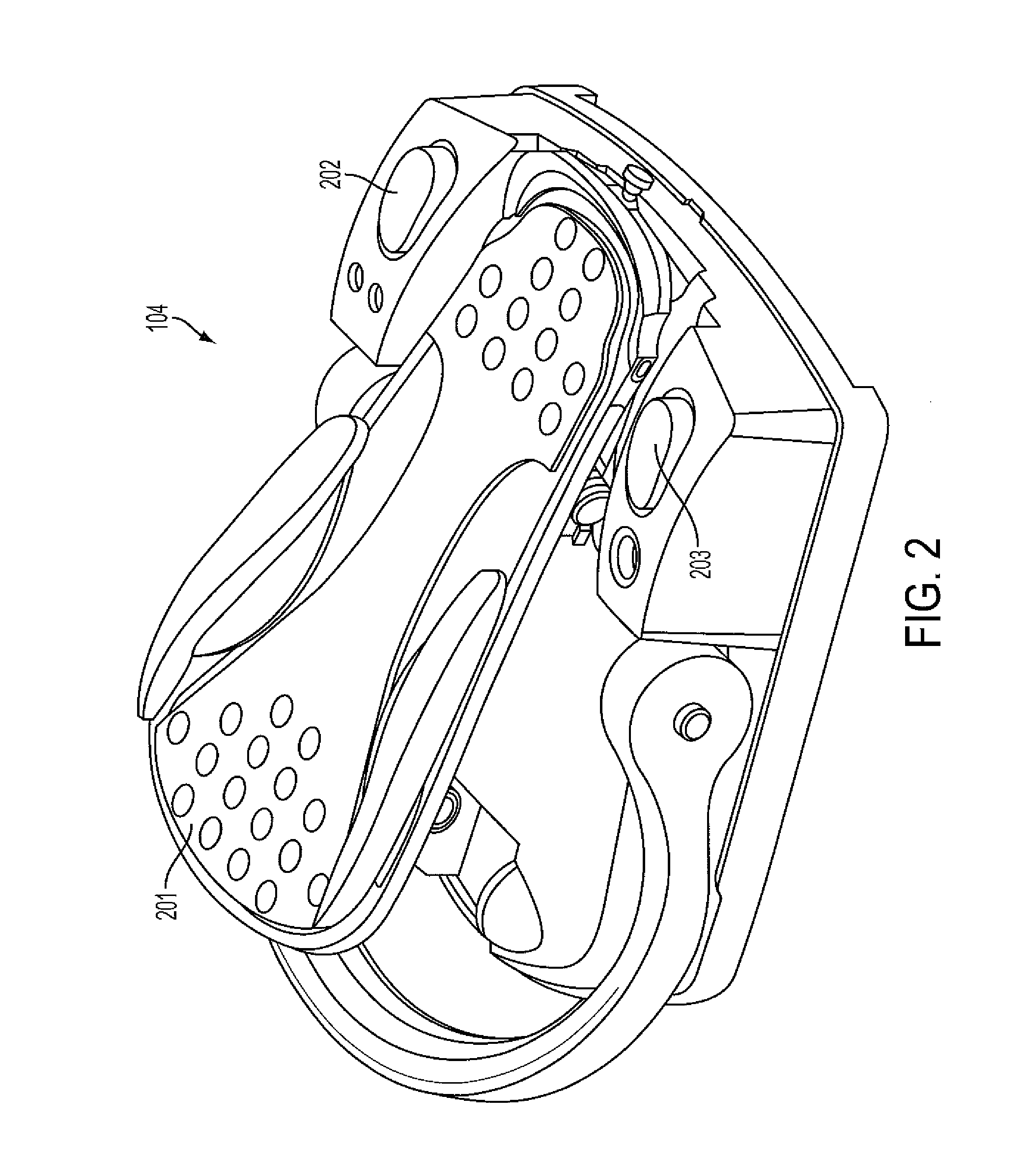Multifunction foot pedal
- Summary
- Abstract
- Description
- Claims
- Application Information
AI Technical Summary
Benefits of technology
Problems solved by technology
Method used
Image
Examples
Embodiment Construction
[0024]The following description and the drawings illustrate specific embodiments sufficiently to enable those skilled in the art to practice the described system and method. Other embodiments may incorporate structural, logical, process and other changes. Examples merely typify possible variations. Individual components and functions are generally optional unless explicitly required, and the sequence of operations may vary. Portions and features of some embodiments may be included in or substituted for those of others.
[0025]In an embodiment, the functionality provided by electromechanical switches is produced instead by using the pitch of the foot pedal treadle in the vertical direction, or the yaw of the foot pedal treadle in the horizontal direction, or both. Such an embodiment allows for, but does not require, the elimination of the electromechanical switches and the simplification of the foot pedal hardware design. In an embodiment, a feedback signal may be provided to the user ...
PUM
 Login to View More
Login to View More Abstract
Description
Claims
Application Information
 Login to View More
Login to View More - R&D
- Intellectual Property
- Life Sciences
- Materials
- Tech Scout
- Unparalleled Data Quality
- Higher Quality Content
- 60% Fewer Hallucinations
Browse by: Latest US Patents, China's latest patents, Technical Efficacy Thesaurus, Application Domain, Technology Topic, Popular Technical Reports.
© 2025 PatSnap. All rights reserved.Legal|Privacy policy|Modern Slavery Act Transparency Statement|Sitemap|About US| Contact US: help@patsnap.com



